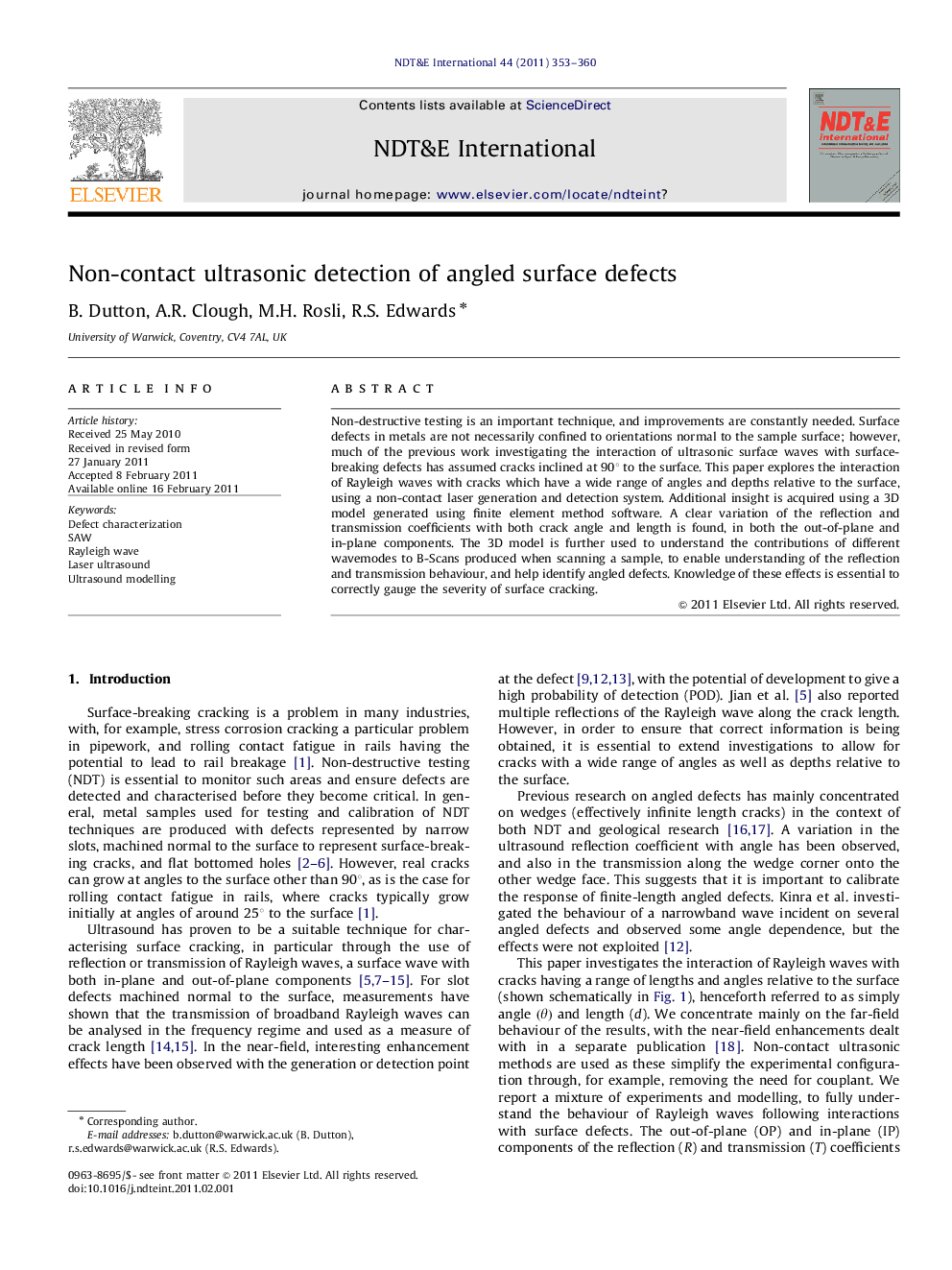| Article ID | Journal | Published Year | Pages | File Type |
|---|---|---|---|---|
| 295471 | NDT & E International | 2011 | 8 Pages |
Non-destructive testing is an important technique, and improvements are constantly needed. Surface defects in metals are not necessarily confined to orientations normal to the sample surface; however, much of the previous work investigating the interaction of ultrasonic surface waves with surface-breaking defects has assumed cracks inclined at 90° to the surface. This paper explores the interaction of Rayleigh waves with cracks which have a wide range of angles and depths relative to the surface, using a non-contact laser generation and detection system. Additional insight is acquired using a 3D model generated using finite element method software. A clear variation of the reflection and transmission coefficients with both crack angle and length is found, in both the out-of-plane and in-plane components. The 3D model is further used to understand the contributions of different wavemodes to B-Scans produced when scanning a sample, to enable understanding of the reflection and transmission behaviour, and help identify angled defects. Knowledge of these effects is essential to correctly gauge the severity of surface cracking.
